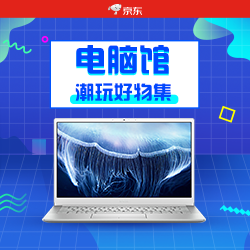禁用开发者工具的方法与示例
2025-07-06
28
参考资料
- HTML 表格背景
- HTML 使用
禁用开发者工具的方法与示例
禁用开发者工具的方法与示例
下面是一个展示多种禁用开发者工具方法的HTML应用示例:
<!DOCTYPE html> <html lang="zh-CN"> <head> <meta charset="UTF-8"> <meta name="viewport" content="width=device-width, initial-scale=1.0"> <title>开发者工具禁用方法示例</title> <style> * { margin: 0; padding: 0; box-sizing: border-box; font-family: 'Segoe UI', Tahoma, Geneva, Verdana, sans-serif; } body { background: linear-gradient(135deg, #1a2a6c, #b21f1f, #1a2a6c); color: #fff; min-height: 100vh; padding: 20px; } .container { max-width: 1000px; margin: 0 auto; padding: 20px; } header { text-align: center; padding: 30px 0; margin-bottom: 30px; background: rgba(0, 0, 0, 0.3); border-radius: 15px; box-shadow: 0 10px 30px rgba(0, 0, 0, 0.3); } h1 { font-size: 2.8rem; margin-bottom: 10px; text-shadow: 0 2px 10px rgba(0, 0, 0, 0.5); } .subtitle { font-size: 1.2rem; opacity: 0.8; max-width: 800px; margin: 0 auto; line-height: 1.6; } .warning { background: rgba(255, 0, 0, 0.2); border-left: 5px solid #ff5252; padding: 15px; margin: 20px 0; border-radius: 0 10px 10px 0; } .card-container { display: grid; grid-template-columns: repeat(auto-fit, minmax(300px, 1fr)); gap: 25px; margin-top: 30px; } .card { background: rgba(30, 30, 50, 0.7); border-radius: 15px; padding: 25px; box-shadow: 0 8px 25px rgba(0, 0, 0, 0.4); transition: transform 0.3s, box-shadow 0.3s; display: flex; flex-direction: column; } .card:hover { transform: translateY(-10px); box-shadow: 0 15px 35px rgba(0, 0, 0, 0.5); } .card h2 { color: #4fc3f7; margin-bottom: 15px; font-size: 1.6rem; display: flex; align-items: center; } .card h2 i { margin-right: 10px; font-size: 1.8rem; } .card p { line-height: 1.7; margin-bottom: 20px; flex-grow: 1; } .card .code { background: rgba(0, 0, 0, 0.4); padding: 15px; border-radius: 8px; font-family: monospace; font-size: 0.9rem; overflow-x: auto; margin: 15px 0; } .card .effect { color: #69f0ae; font-weight: bold; padding: 10px 15px; background: rgba(0, 100, 0, 0.2); border-radius: 8px; margin-top: 10px; } .limitations { background: rgba(255, 152, 0, 0.2); border-left: 5px solid #ff9800; padding: 20px; margin-top: 40px; border-radius: 0 10px 10px 0; } .limitations h2 { color: #ffd54f; margin-bottom: 15px; } .limitations ul { padding-left: 25px; } .limitations li { margin-bottom: 10px; line-height: 1.6; } footer { text-align: center; margin-top: 40px; padding: 20px; font-size: 0.9rem; opacity: 0.7; } @media (max-width: 768px) { .card-container { grid-template-columns: 1fr; } h1 { font-size: 2.2rem; } } </style> </head> <body> <div class="container"> <header> <h1>开发者工具禁用方法示例</h1> <p class="subtitle"> 本页面展示了多种用于检测或阻止用户打开浏览器开发者工具的技术。 请注意这些方法大多只能增加难度,不能完全阻止访问开发者工具。 </p> </header> <div class="warning"> <strong>重要提示:</strong> 这些技术主要用于教育目的。在实际应用中,过度使用可能会影响用户体验, 并且有经验的用户总能找到绕过这些限制的方法。 </div> <div class="card-container"> <div class="card"> <h2><i>🔍</i> 方法 1: 检测控制台打开</h2> <p>通过比较窗口内外尺寸差异来检测开发者工具是否打开。</p> <div class="code"> // 检测窗口大小变化<br> window.addEventListener('resize', () => {<br> const threshold = 200;<br> const widthDiff = window.outerWidth - window.innerWidth;<br> const heightDiff = window.outerHeight - window.innerHeight;<br> <br> if (widthDiff > threshold || heightDiff > threshold) {<br> alert('开发者工具已打开!');<br> window.location.reload();<br> }<br> }); </div> <div class="effect">效果:当检测到开发者工具打开时,显示警告并刷新页面</div> </div> <div class="card"> <h2><i>⏱️</i> 方法 2: 调试器干扰</h2> <p>使用无限debugger循环阻止用户在控制台中正常操作。</p> <div class="code"> // 设置debugger循环<br> setInterval(() => {<br> try {<br> debugger;<br> // 其他干扰代码...<br> } catch (err) {<br> // 错误处理<br> }<br> }, 100); </div> <div class="effect">效果:不断触发断点,干扰调试过程</div> </div> <div class="card"> <h2><i>🚫</i> 方法 3: 禁用右键菜单</h2> <p>阻止用户通过右键菜单访问"检查元素"选项。</p> <div class="code"> // 禁用右键菜单<br> document.addEventListener('contextmenu', (e) => {<br> e.preventDefault();<br> alert('右键菜单已被禁用!');<br> return false;<br> }); </div> <div class="effect">效果:用户无法使用右键菜单访问开发者工具</div> </div> <div class="card"> <h2><i>⌨️</i> 方法 4: 禁用快捷键</h2> <p>拦截打开开发者工具的常用键盘快捷键。</p> <div class="code"> // 拦截常用快捷键<br> document.addEventListener('keydown', (e) => {<br> // F12, Ctrl+Shift+I, Ctrl+Shift+J等<br> if (e.key === 'F12' || <br> (e.ctrlKey && e.shiftKey && e.key === 'I') ||<br> (e.ctrlKey && e.shiftKey && e.key === 'J') ||<br> (e.ctrlKey && e.key === 'U')) {<br> e.preventDefault();<br> alert('快捷键已被禁用!');<br> return false;<br> }<br> }); </div> <div class="effect">效果:阻止用户使用快捷键打开开发者工具</div> </div> <div class="card"> <h2><i>🛡️</i> 方法 5: 控制台日志检测</h2> <p>通过覆盖console方法检测控制台活动。</p> <div class="code"> // 覆盖console方法<br> ['log', 'warn', 'error'].forEach(method => {<br> const original = console[method];<br> console[method] = function() {<br> // 检测到控制台活动<br> document.body.innerHTML = '<h1>控制台使用被禁止!</h1>';<br> original.apply(console, arguments);<br> };<br> }); </div> <div class="effect">效果:当用户尝试使用控制台时修改页面内容</div> </div> <div class="card"> <h2><i>👁️</i> 方法 6: 定时器检测</h2> <p>利用开发者工具会影响定时器执行的特点进行检测。</p> <div class="code"> // 定时器检测<br> let lastTime = Date.now();<br> setInterval(() => {<br> const currentTime = Date.now();<br> if (currentTime > lastTime + 150) { // 阈值<br> console.log('开发者工具可能已打开');<br> // 执行相应操作<br> }<br> lastTime = currentTime;<br> }, 100); </div> <div class="effect">效果:检测定时器延迟判断开发者工具状态</div> </div> </div> <div class="limitations"> <h2>技术限制与注意事项</h2> <ul> <li>这些方法都不能100%阻止访问开发者工具,只能增加难度</li> <li>现代浏览器提供了多种绕过这些限制的方式</li> <li>过度使用这些技术会影响用户体验和网站性能</li> <li>部分方法可能被安全软件或浏览器扩展拦截</li> <li>这些技术不应替代真正的安全措施</li> <li>在大多数情况下,应尊重用户使用开发者工具的权利</li> </ul> </div> <footer> <p>本页面仅供教育目的,展示开发者工具检测/限制技术的可能性</p> <p>实际应用中请谨慎使用这些技术,并考虑其对用户体验的影响</p> </footer> </div> <script> // 方法1: 检测控制台打开 window.addEventListener('resize', () => { const threshold = 200; const widthDiff = window.outerWidth - window.innerWidth; const heightDiff = window.outerHeight - window.innerHeight; if (widthDiff > threshold || heightDiff > threshold) { console.log('检测到开发者工具已打开!'); } }); // 方法2: 调试器干扰(实际使用时取消注释) /* setInterval(() => { try { debugger; } catch (err) { console.error(err); } }, 100); */ // 方法3: 禁用右键菜单 document.addEventListener('contextmenu', (e) => { e.preventDefault(); return false; }); // 方法4: 禁用快捷键 document.addEventListener('keydown', (e) => { // 检测 F12 if (e.key === 'F12') { e.preventDefault(); console.log('F12 已被禁用'); return false; } // 检测 Ctrl+Shift+I if (e.ctrlKey && e.shiftKey && e.key === 'I') { e.preventDefault(); console.log('Ctrl+Shift+I 已被禁用'); return false; } // 检测 Ctrl+Shift+J if (e.ctrlKey && e.shiftKey && e.key === 'J') { e.preventDefault(); console.log('Ctrl+Shift+J 已被禁用'); return false; } // 检测 Ctrl+U if (e.ctrlKey && e.key === 'U') { e.preventDefault(); console.log('Ctrl+U 已被禁用'); return false; } }); // 方法5: 控制台日志检测(演示版本) const originalConsoleLog = console.log; console.log = function() { document.body.innerHTML += '<div style="color:red;padding:10px;">控制台活动已被检测!</div>'; originalConsoleLog.apply(console, arguments); }; // 方法6: 定时器检测 let lastTime = Date.now(); setInterval(() => { const currentTime = Date.now(); if (currentTime > lastTime + 150) { console.log('定时器延迟检测 - 开发者工具可能已打开'); } lastTime = currentTime; }, 100); </script> </body> </html>功能说明
这个HTML页面展示了6种常用的开发者工具禁用/检测技术:
控制台打开检测:通过比较窗口内外尺寸差异检测开发者工具
调试器干扰:使用无限debugger循环阻止正常调试
禁用右键菜单:阻止用户通过右键菜单访问"检查元素"选项
禁用快捷键:拦截F12、Ctrl+Shift+I等常用快捷键
控制台日志检测:覆盖console方法检测控制台活动
定时器检测:利用开发者工具会影响定时器执行的特点进行检测
注意事项
这些方法主要用于教育目的,不能完全阻止开发者工具访问
实际应用中应谨慎使用,避免过度影响用户体验
现代浏览器提供了多种绕过这些限制的方式
这些技术不应替代真正的安全措施
页面采用响应式设计,在各种屏幕尺寸上都能良好显示,并使用了渐变色背景、卡片式布局和现代化的UI元素。
好物精选
声明:本站所有文章资源内容,如无特殊说明或标注,均为采集网络资源。如若本站内容侵犯了原著者的合法权益,可联系本站删除。
版权声明:本站所有文章均为原创,由《DeepSeek-R1模型》自动生成。内容真实性,尽供参考学习。
版权协议:遵循 CC 4.0 BY-SA 版权协议,若要转载、复制、请附上原文出处链接和本声明。
原文链接:https://html.ciilii.com/show/news-2171.html

